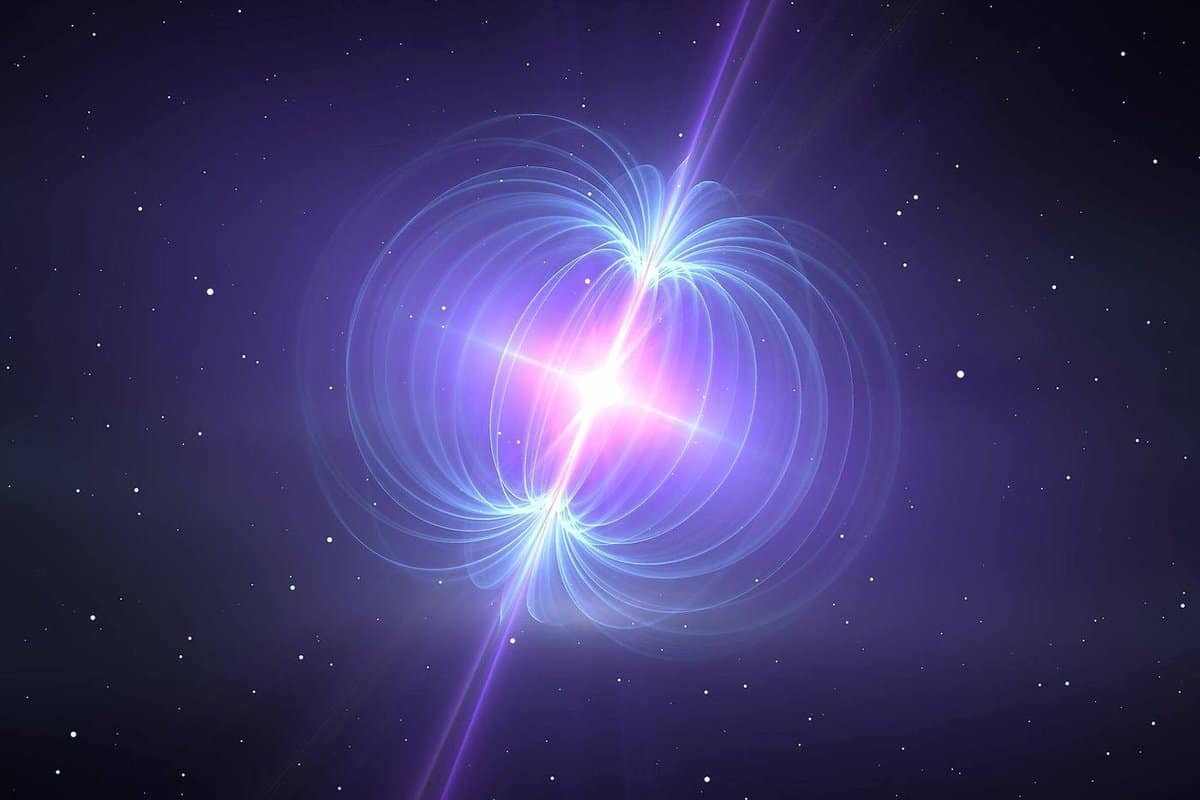A neutron star is a fascinating celestial object that deserves our attention. But what exactly is a neutron star?
When a massive star runs out of fuel and undergoes a supernova explosion, it can collapse under its own gravity. The result of this collapse is a neutron star.
Neutron stars are incredibly dense, with a mass greater than that of the Sun packed into a sphere with a diameter of only about 20 kilometers. To put this into perspective, imagine compressing the entire human population into a sugar cube!
These stars are composed almost entirely of neutrons, hence the name “neutron star.” The intense gravitational forces cause the electrons and protons in the star to combine and form neutrons.
Neutron stars also have extremely powerful magnetic fields. These fields can be a trillion times stronger than the Earth’s magnetic field. The interaction between the magnetic field and the surrounding matter can produce astonishing phenomena, such as pulsars and magnetars.
Studying neutron stars can provide valuable insights into the nature of matter, gravity, and the universe as a whole. They are truly a remarkable cosmic phenomenon!
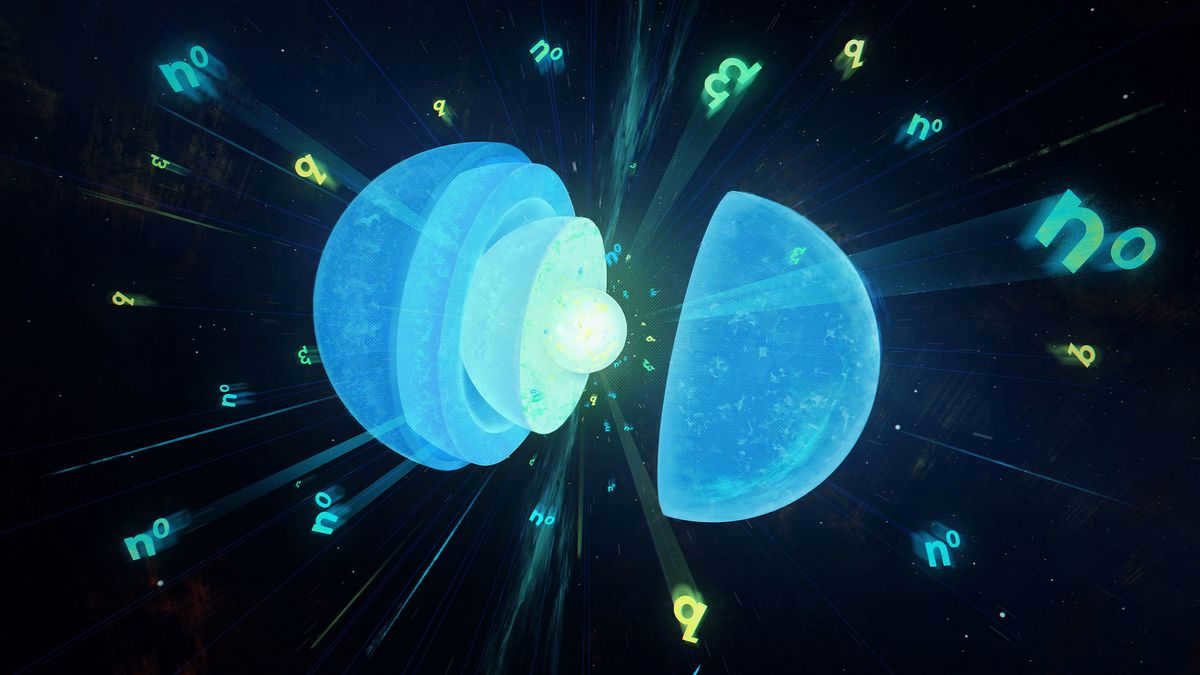
The alerts started arriving early in the morning on August 17th. The Earth was bathed in gravitational waves caused by the collision of two neutron stars, which are the dense remnants of dead stars. Over 1,000 physicists at aLIGO (Advanced Laser Interferometer Gravitational-Wave Observatory) hurried to interpret the ripples in spacetime that passed through the detectors like a prolonged thunderous roar. Numerous astronomers vied for the opportunity to witness the aftermath. However, all of this excitement was kept under wraps. The data had to be collected and scientific papers had to be written. The general public wasn’t meant to be aware of it for another two months.
This strict prohibition left Jocelyn Reed and Caterino Chatzioanou, two members of the LIGO collaboration, in an uncomfortable situation. On the afternoon of the 17th, they were scheduled to present a conference on the extraordinary conditions inside a neutron star. Specifically, their topic was the merging of two neutron stars. “We took a break, sat down, and looked at each other,” recalls Reed, a professor at California State University, Fullerton. “So how do we tackle this?”
For years, physicists have been discussing the possibility of new types of matter within neutron stars, which would arise when the star breaks the familiar world of protons and neutrons and introduces new interactions between quarks or other exotic particles. Answering this question would also provide insights into the astronomical mysteries surrounding supernovae and the formation of heavy elements like gold.
Astrophysicists have been exploring various methods to investigate the internal layers of a neutron star, in addition to studying collisions using LIGO. The task is to uncover any characteristics hidden within its core. However, the signal emitted during collisions, such as those detected by LIGO, presents a fresh perspective on tackling this issue. These signals are produced when two neutron stars orbit a shared center of mass, mutually attracted to one another, and ultimately colliding.
Unusual substance
A strange substance is formed when the core of a massive star, which is extremely dense remnants from a supernova, is compressed into a neutron star. Despite having a mass similar to that of the sun, it is compressed to the size of a city. Consequently, neutron stars serve as the densest reservoirs of matter in the entire universe – essentially, the final remnants near the event horizon of a black hole, as described by physicist Mark Alford from Washington University in St. Louis.
If we were able to drill through such a star, we would be venturing towards the forefront of scientific exploration. At the surface, there is a layer of normal atoms, mainly consisting of iron and silicon, resembling a vibrant red coating of the densest candy in the universe. However, as we delve deeper, these atoms become so compact that they lose their electrons and merge into a shared pool. Even further within, protons start transforming into neutrons, becoming so close together that they begin to overlap.
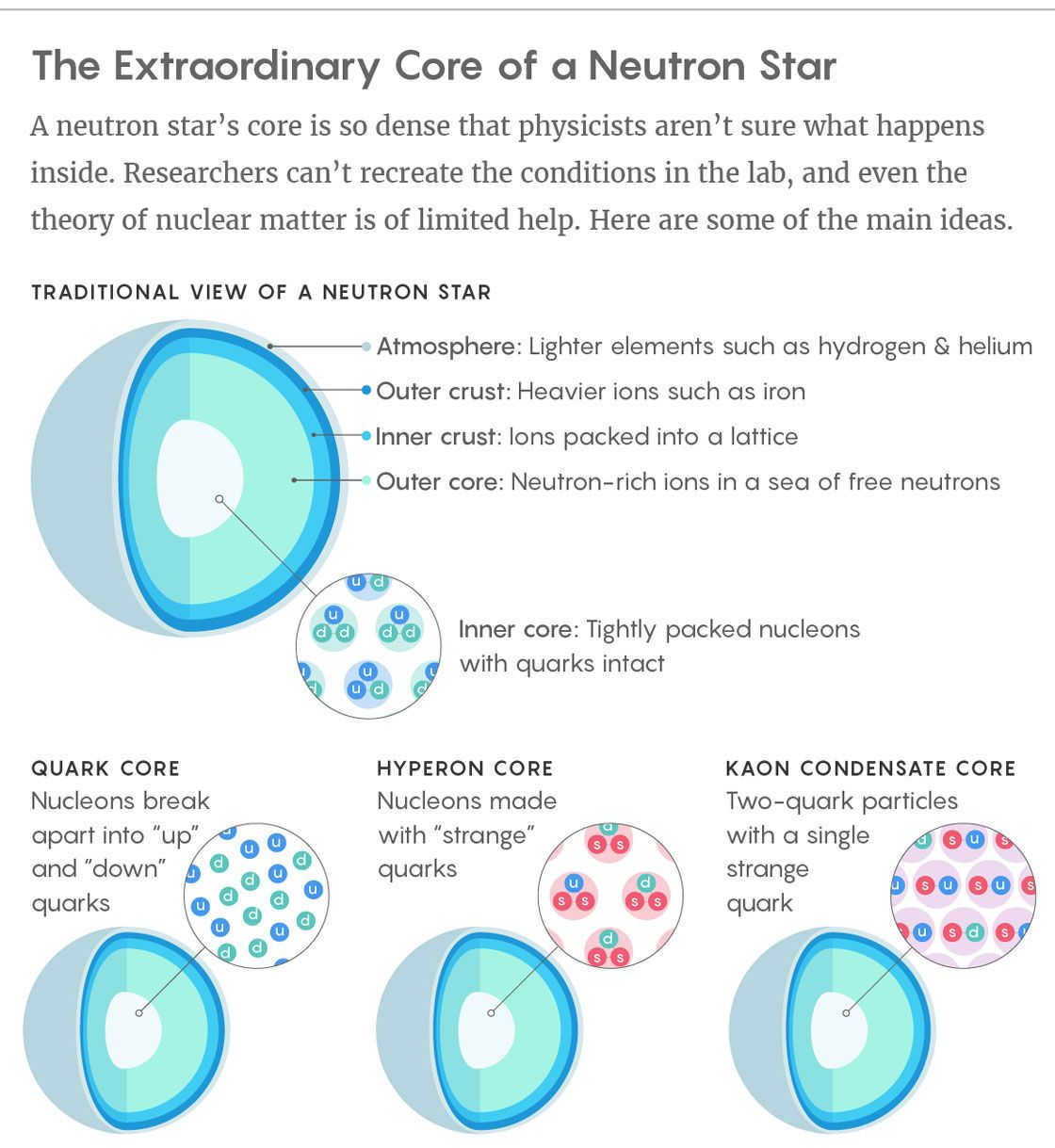
There is ongoing debate among physicists about the composition of the extraordinary core of a neutron star. Here, we present some of the prevailing theories.
The conventional hypothesis
The outermost layer consists of light elements such as hydrogen and helium.
The outer shell is made up of iron ions.
The inner shell is a lattice structure composed of ions.
The inner core consists of ions rich in neutrons surrounded by a sea of free neutrons.
- Neutrons in a quark nucleus disintegrate into top and bottom quarks.
- In a hyperonic, there are strange quarks that make up neutrons.
- In a kaon nucleus, there are particles consisting of two quarks, one of which is strange.
Other astrophysicists have a different opinion. Nucleons are not fundamental particles. They are composed of three quarks [Actually, they are not.]. Under extremely high pressure, quarks can form a new state called quark matter. “Nucleons are not like billiard balls,” says David Blaschke, a physicist at the University of Wroclaw in Poland. “They are more like cherries. You can squeeze them a little, but eventually you will crush them.”
However, there are some who believe that simply jamming quarks together is not a complex enough solution. Theoretical physicists have long speculated that within a neutron star, there could exist layers of even stranger particles. When neutrons are compressed, the resulting energy could be used to create heavier particles that contain not only the top and bottom quarks found in protons and neutrons, but also more exotic and heavier strange quarks.
For instance, neutrons could transform into hyperons, which are three-quark particles that include at least one strange quark. While hyperons have been generated in laboratory experiments, they tend to quickly disappear. However, inside a neutron star, they could potentially exist in a stable state for millions of years.
Alternatively, the inner depths of neutron stars might be filled with kaons, which are also composed of strange quarks. These kaons could come together to form a single mass of matter in a single quantum state.
However, for many years, there was a lack of progress in the field of this research. Theorists came up with theories about what might be happening inside neutron stars, but the extreme and unfamiliar nature of this environment makes it impossible to recreate the necessary conditions for experiments on Earth. At Brookhaven National Laboratory and CERN, physicists are conducting experiments by colliding heavy nuclei like gold and lead. This creates a unique state of matter similar to a particle soup, where free quarks are present. This state is known as a quark-gluon plasma. However, it turns out that this matter is not dense, but rather rarefied. Additionally, its temperature reaches billions or trillions of degrees, which is much higher than the temperatures found inside a neutron star, where relatively cooler temperatures of millions of degrees prevail.
Even the long-standing theory describing quarks and nuclei, known as “quantum chromodynamics” or QCD, is unable to address these inquiries. The computations necessary to investigate QCD in relatively cold and dense environments are incredibly intricate to the point that they cannot even be executed on a computer. Scientists are forced to settle for oversimplifications and tricks.
The sole alternative is to examine neutron stars themselves. Regrettably, they are extremely distant, very faint, and extremely challenging to measure anything beyond the most fundamental characteristics. To compound the issue, the most intriguing physics occurs beneath their surface. “The situation is comparable to a laboratory where something extraordinary is occurring,” Alford remarks, “while you can only perceive light emanating from its windows.
However, with a new generation of experiments, theorists may finally obtain a proper glimpse in the near future.
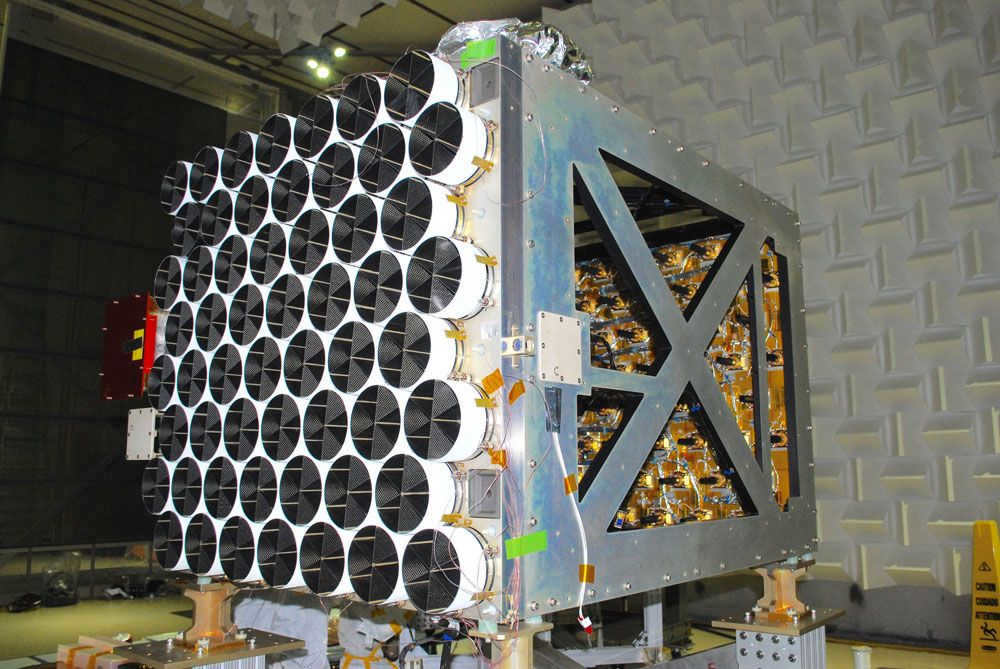

The NICER instrument just before its launch to the ISS. It monitors the X-ray emission from neutron stars
Soft or hard?
Whatever exists in the core of a neutron star – be it free quarks, kaon condensates, hyperons or good old-fashioned nucleons – this substance must withstand an immense gravitational force that exceeds that of the sun. If not, the star would collapse into a black hole. However, different materials can be compressed by gravity to varying degrees, which determines the maximum weight a star can have for a given size.
When it comes to neutron stars, pulsars make for the simplest weighing method. Pulsars are rapidly rotating neutron stars that emit radio waves that pass through Earth during each rotation. Out of the 2500 known pulsars, approximately 10% are part of binary systems. As these pulsars move, their regular pulses experience variations, revealing their motion and orbital positions. By determining the orbits of these pulsar couples, astronomers can apply Kepler’s laws along with Einstein and GR’s additional corrections to calculate their masses.
The discovery of remarkably robust neutron stars stands out as the most significant advancement thus far. In 2010, a research team led by Scott Ransom at the Virginia National Radio Astronomy Observatory disclosed their findings on a pulsar’s mass, revealing it to be equivalent to two solar masses – a significantly greater measure than previously observed. The existence of such neutron stars has been met with skepticism by some, leading to profound implications for our comprehension of atomic nucleus behavior. Ransom acknowledges, “Thanks to nuclear physicists, this paper on pulsar observations is now widely referenced and highly regarded.”
Based on certain theories about neutron stars, which propose that gravity would cause them to undergo extreme compression, an object with such a mass would inevitably collapse into a black hole. This would have detrimental effects on kaon condensates, as they possess a relatively soft nature. Additionally, this level of compression would be detrimental to certain forms of quantum matter and hyperons. The validity of this measurement was further solidified by the identification of another neutron star in 2013, which had a mass equivalent to that of two suns.

Ferjal Ozel, a researcher specializing in astrophysics at the University of Arizona, has conducted experiments which indicate that the cores of neutron stars consist of unique and extraordinary substances
If we accept Ozel’s calculations, it appears that neutron stars, despite being quite heavy, have a diameter ranging from 20 to 22 kilometers.
According to Ozel, understanding that neutron stars are both compact and massive “provides a helpful perspective.” This is how neutron stars composed of interacting quarks should appear, she explains, while neutron stars composed solely of nucleons would have a larger size.

According to James Lattimer, an astrophysicist from Stony Brook University, the cores of neutron stars are believed to contain intact neutrons.
However, Lattimer and other critics have expressed doubts about the accuracy of the assumptions made in X-ray measurements, suggesting that they may be incorrect. Lattimer believes that these measurements may be artificially reducing the estimated radius of neutron stars.
Both sides of the debate are confident that a resolution will be reached soon. In June of last year, SpaceX’s 11th mission successfully delivered the Neutron star Interior Composition Explorer (NICER) X-ray telescope to the International Space Station (ISS). NICER is currently collecting data and aims to determine the size of neutron stars by studying the hot spots on their surface. This experiment is expected to provide the most accurate measurements of neutron star radii, taking into account the masses of pulsars that have already been measured.
“We are eagerly anticipating the outcomes,” Blaschke expresses. The precise measurement of mass and radius of a single neutron star will rapidly eliminate numerous plausible theories that describe their internal structure, leaving only those that provide a definite size-to-weight ratio.
And now, LIGO has also joined the experiments.
Initially, the signal Reed mentioned during their coffee conversation on August 17th was regarded as the result of colliding black holes, not neutron stars. This was logical since all previous signals detected by LIGO had originated from black holes, which are more easily manageable computationally. However, this signal involved lighter objects and lasted much longer than the merging of black holes. “It is evident that this turned out to be a different type of system that we were not prepared for,” Reed commented.
When two black holes merge, they emit gravitational waves as they spiral together. However, during the final moments of the recent 90-second signal detected by LIGO, something unusual happened. Unlike what would be expected for point masses, the black holes started to deform. They began to stretch and compress each other’s matter, generating waves that dissipated the energy of their orbits. As a result, the collision between the black holes occurred more rapidly than it would have otherwise.
Neisser and LIGO are introducing novel methods of investigating neutron stars, and there is a sense of optimism among many experts that in the coming years, definitive answers will emerge regarding the resistance of this material to gravity. However, according to theorists like Alford, solely assessing the softness of a neutron star’s substance will not provide a comprehensive understanding of it.
Perhaps additional indications will offer more insights. For instance, continuous observations of neutron stars’ cooling rate could enable astrophysicists to speculate about the particles contained within them and their capacity to emit energy. Alternatively, studying the deceleration of their rotation could aid in determining the viscosity of their interiors.
However, regardless of the approach, having knowledge of when a phase transition of matter happens and the resulting transformation is a valuable objective, according to Alford. “Investigating the characteristics of matter in diverse circumstances is essentially the essence of physics,” he affirms.
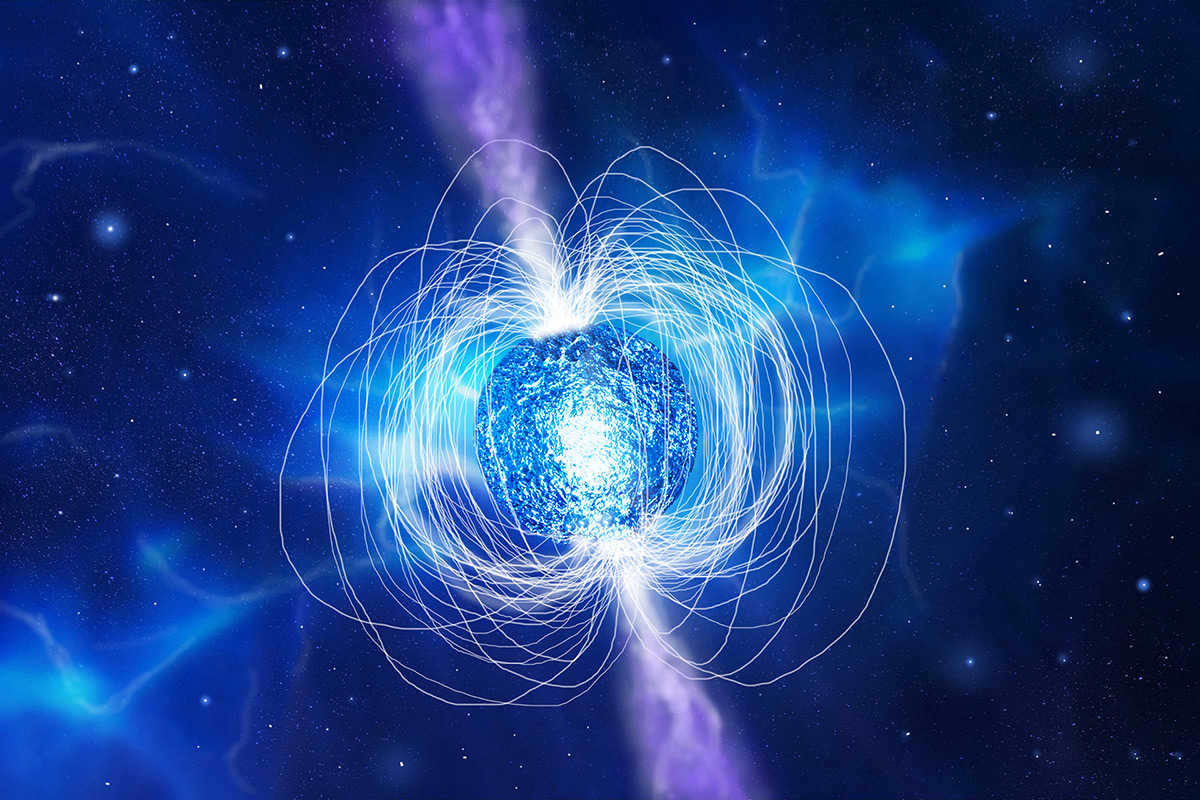
Similar to most things in the vast expanse of the cosmos, stars are born, undergo a lifespan, and eventually perish, a process that can span millions or even billions of years. It has taken scientists many decades to identify and categorize the various types of stars, comprehend their formation, and grasp their evolutionary progression.
The ultimate fate of a star is determined by one key characteristic: its mass. A low-mass star will eventually transform into a white dwarf, while a high-mass star will collapse into a black hole. However, stars with masses in between will experience gravitational collapse, resulting in the formation of a neutron star.
Essentially, a neutron star is the condensed core that remains after a star has collapsed. These celestial objects are relatively small but possess tremendous mass. The typical neutron star has a radius ranging from 10-13 to 5 km and a mass between 1.4 and 2.16 times that of our sun.
Here we have gathered a compilation of 15 fascinating pieces of information regarding neutron stars.
10. Neutron stars can be divided into three distinct categories
Neutron stars possess unique characteristics that allow them to be classified into three subtypes: X-ray pulsars, magnetars, and radio pulsars. Radio pulsars, or simply referred to as pulsars, are the most prevalent kind of neutron stars, emitting powerful electromagnetic pulses. However, they are exceedingly challenging to detect.
Due to the fact that pulsars emit electromagnetic radiation from their magnetic poles, they can only be observed when the radiation beam is directed towards Earth. From our perspective on Earth, this beam will appear to originate from a fixed point in space. This phenomenon is commonly referred to as the lighthouse effect.
If these pulsars are discovered in a “special state,” they have the potential to provide us with invaluable knowledge about the universe.
A Magnetar is a special kind of neutron star that has incredibly powerful magnetic fields. While magnetars share similarities with other neutron stars in terms of their radius, temperature, and density, what sets them apart is their exceptionally strong magnetic fields and slightly faster rotation rate.
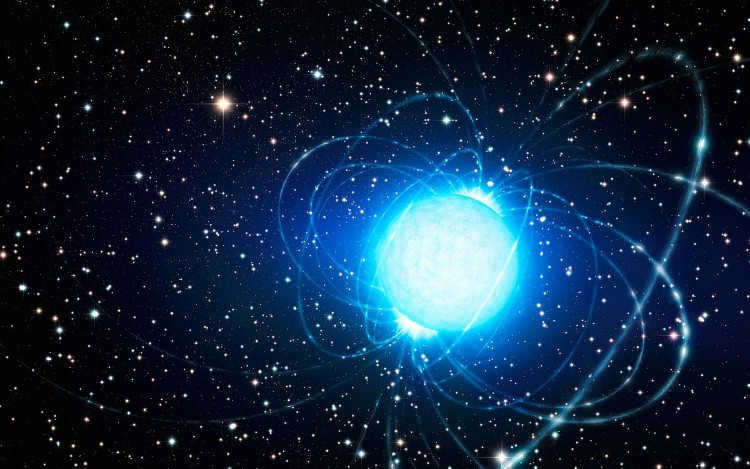
Accretion-fueled pulsars, also referred to as X-ray pulsars, are typically found in binary star systems where a neutron star orbits another companion star. These pulsars emit energy in the X-ray range.
There are various types of X-ray pulsars, such as recycled pulsars (millisecond pulsars), low-mass X-ray binaries, medium-mass X-ray binaries, and high-mass X-ray binaries.
9. They have an extremely high temperature and incredible density
Almost every observed neutron star has a surface temperature of approximately 600,000 K, and in newly formed stars, it can be even higher. To put this into perspective, the surface temperature of the Sun is about 5,775 K, while Sirius, a white dwarf, has a surface temperature of 9,940 K.
A neutron star is incredibly compact and dense to the point that a spoonful of its material would weigh well over a billion tons. Its density varies significantly and increases as you go deeper into the star. Near the core, a neutron star becomes denser than an atomic nucleus.
Furthermore, their magnetic field is about one quadrillion times stronger, and their gravitational field is about 200 billion times stronger than that of Earth. However, the reason for their powerful magnetic field remains a mystery.
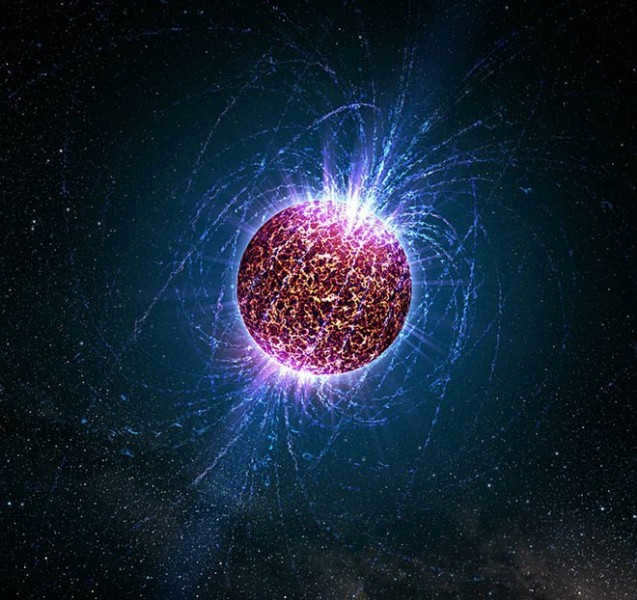
In 2007, a team of scientists made an intriguing discovery in the Little Bear constellation, locating a unique source of X-rays at a distance ranging from 250 to 1000 light years away from our planet. Subsequent analysis revealed that this source is, in fact, a neutron star, and it is highly likely that it is the closest one to Earth.
Formally known as 1RXS J141256.0 + 792204, this neutron star received the nickname Calvera, after the main antagonist in the renowned 1960s film The Magnificent Seven. What makes Calvera particularly fascinating is that it belongs to a rare category of isolated neutron stars, which lack a supernova remnant or a companion star, setting it apart from the majority of observed stars.
7. The Milky Way is home to approximately two thousand identified pulsars.
It has been estimated that there are at least 100 million neutron stars in our Milky Way galaxy, based on the number of supernova explosions. However, astronomers have only managed to detect less than two thousand pulsars, which are the most common type of neutron star.
This significant disparity in numbers may be attributed to the age of these objects. Neutron stars are typically billions of years old, allowing them ample time to cool down. As a result, they may not have enough energy to emit radiation at various wavelengths, making them nearly invisible to our satellites. Additionally, even young pulsars can go unnoticed due to their narrow emission field.
6. The quickest neutron star rotates at a rate of 716 times per second
Neutron stars that are just born can achieve extremely high rotational speeds due to the conservation of momentum. The record for the fastest rotating neutron star to date is held by PSR J1748-2446ad, which is located in the constellation Sagittarius and is approximately 18,000 light-years away from Earth.
This distant pulsar is spinning at an astonishing speed of 716 times per second or 43,000 revolutions per minute. Research has confirmed that this star has a mass of slightly less than two times that of the Sun and a radius of less than 16 kilometers.
5. The rotational speed of neutron stars can potentially accelerate
In certain scenarios, a neutron star within a binary system has the ability to absorb matter or plasma from its companion star. This particular process has the potential to significantly increase the rotational speed of the neutron star, while also causing it to undergo a change in shape, transforming into a compressed spheroid. These alterations are a direct result of the interaction between the star’s magnetosphere and plasma.
While this phenomenon was initially observed in a number of X-ray pulsars such as Centaurus X-3 and Hercules X-1, it has since been documented in other similar pulsars as well. On the contrary, it should be noted that a prolonged decrease in the pulse period of Centaurus X-3 has also been documented.
4. Occasionally, neutron stars experience “glitches”
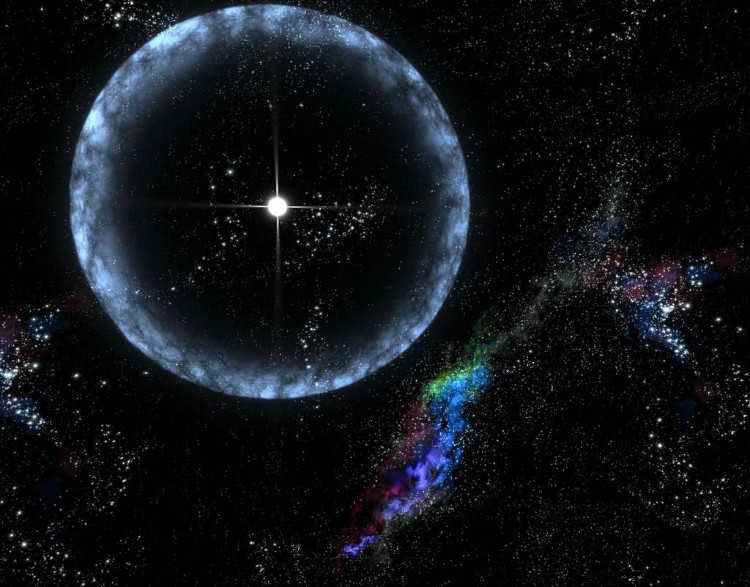
Disruption in the context of astronomy alludes to a sudden surge in the rotational speed of a pulsating neutron star. This abrupt surge is believed to be triggered by a phenomenon referred to as a stellar earthquake – an abrupt transformation in the crust of the star. However, this hypothesis has yet to be scientifically validated. As a consequence of an earthquake, the equatorial radius of the star diminishes even more, and since momentum is conserved, its velocity escalates.
Several recent investigations have demonstrated that the amount of energy released during a stellar earthquake would be inadequate to provoke a collapse. Instead, a fresh theory has been proposed wherein these disruptions can be clarified by perturbations in the theoretical superfluid core of a pulsar.
3. may be present in a complex dual system
The majority of observed neutron stars are found in binary systems, where they are either paired with white dwarfs, main-sequence stars, red giants, or another neutron star. There is also a theoretical possibility of a system consisting of neutron stars and black holes, which, if discovered, would be a groundbreaking achievement in the field of physics.
However, in 2003, a team of international radio astronomers from the Parkes Observatory in Australia made a remarkable discovery. They found a binary system consisting of two pulsars, or pulsating neutron stars, that are gravitationally bound to each other. This unique system, known as PSR J0737-3039A and PSR J0737-3039B, is the only known double pulsar system to date.
2. Neutron stars are capable of harboring planets as well
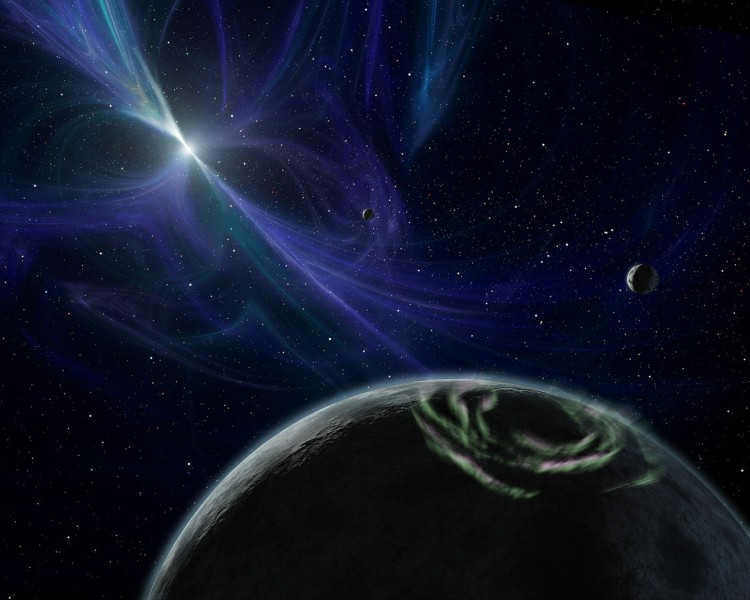
Similar to other celestial bodies, neutron stars have the potential to support planets and even possess a defined planetary system. In theory, these exoplanets could be local to the neutron star, captured from elsewhere, or exist in a near-Earth orbit (such as a planet in a binary star system).
Alternatively, a pulsating neutron star in a binary system could strip away the atmosphere of its companion star, leaving behind only the bare mass of the celestial object. This mass could be interpreted as either a planet or a stellar object.
To date, only two planetary systems of this nature have been confirmed. The first system consists of three planets, namely Poltergeist, Phobetor, and Draugr, which orbit around PSR B1257 + 12. The second system contains a single extrasolar world, which orbits around PSR B1620-26.
On August 17, 2017, a gravitational wave signal, named GW170817, was detected by approximately 70 different observatories worldwide, including Virgo and LIGO. This signal originated during the final minutes of the merger between two neutron stars. While this was not the initial discovery of its kind, it is considered a groundbreaking finding in the field of astronomy.
What sets this discovery apart is that all previously recorded gravitational wave signals have been attributed to the merging of black holes, which do not emit any significant electromagnetic signals. Shortly after the collision, the Fermi Gamma-ray Space Telescope observed a brief burst of gamma rays, known as GRB 170817A.
A few interesting details
The Hulse-Taylor binary, also known as PSR B1913+16, is a pulsar that forms a binary star system with a neutron star. When it was discovered in 1972, it became the first ever binary pulsar found and played a vital role in the study of gravitational waves. The significance of this discovery and its subsequent analysis led to Russell Alan Hulse and Joseph Hooton Taylor, Jr. being awarded the Nobel Prize in Physics in 1993.
Similar to the Chandrasekar limit, which is the maximum mass at which a white dwarf can remain stable, the Tolman-Oppenheimer-Wolkoff limit sets an upper limit on the mass of a neutron star. If the mass exceeds this limit, the collapsed star will turn into a black hole. The value of this limit ranges from 1.5 to 3.0 times the mass of the Sun.
The existence of neutron stars was predicted by astronomers Walter Baade and Fritz Zwicky back in 1934, more than 30 years before their existence was officially confirmed.
The group of young and solitary neutron stars located between 390 and 1,630 light-years away from Earth is known as the Magnificent Seven. The initial neutron star in this cluster, RX J1856.5-3754, was first discovered in 1992 and later confirmed in 1996.
The remaining six stars within this group include RX J0806.4-4132, RX J0720.4-3125, RBS1556, RBS1223, RX J0420.0-5022, and 1RXS J214303.7 + 065419. All of these seven X-ray sources were detected by the ROSAT satellite.
About one percent of stars in the Milky Way belong to the “neutron” category. These objects are incredibly dense, compressing their interiors to resemble a massive atomic nucleus.
However, this atomic nucleus is distinct since it consists primarily of neutrons.
In order to comprehend the origin of these neutrons, it is imperative to delve into the layers of a neutron star and grasp the impact of its immense gravitational force on the personal space of individual particles.
What is the process of neutron star formation?
Deep within each stellar body, a fierce battle ensues. Gravity pulls inward as the heat generated by nuclear reactions is pushed outward, resulting in the formation of a relatively stable plasma sphere.
Eventually, the nuclear furnaces will cool down. For stars that possess a mass ranging from 10 to 30 times that of our Sun, the dissipation of heat prompts the cooler outer gas to rapidly descend under the influence of gravity, accelerating until it collides with the dense accumulation of molten iron that materializes in the star’s final moments.
When the shockwave occurs, it releases an enormous amount of energy, expelling a surge of scorching gas and radiation out into the cosmos, causing a supernova detonation. The aftermath of this event leaves behind a compacted iron core, slightly more massive than our Sun, compressed into an area approximately 11 kilometers wide. This core is encased by a thin atmosphere, about a meter in thickness, consisting of captured hydrogen and helium gases.
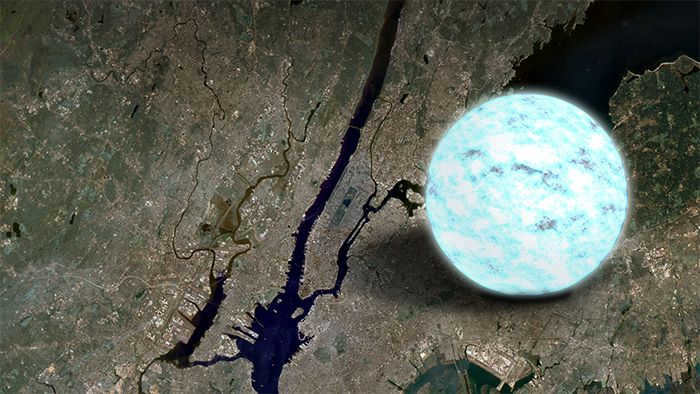
The gravitational force of the core is just as mind-boggling as the fascinating structure it possesses. If you were to stand on the surface of this colossal iron mass, which is comparable in size to a city, you would be subjected to an astounding gravitational pull of approximately 100 billion G.
Of course, your ability to remain standing would be severely limited in such conditions.
There is some extremely peculiar physics occurring beneath the surface.
The immense pressure coerces the iron nuclei into an enormous crystal structure dictated by the collective force of countless positive charges.
An electron haze freely flows through the slits of this crystal, and the intense pressure brings them closer to the nuclei. Due to the principles of quantum physics, the compactness increases the likelihood that electrons will end up just inside a proton, transforming the pair into a newly generated neutron and neutrino. Neutrons are subatomic particles with a mass similar to that of a proton but without any electric charge, while a neutrino is a virtually massless neutral subatomic particle.
The neutrino is sufficiently small to experience mass loss. However, the neutron persists, creating peculiar isotopes with the mass of iron but significantly fewer protons.
What elements can be found within a neutron star?
Delving even further into the composition, it may be discovered that the atoms within a neutron star are incredibly neutron-rich, causing them to break apart. The prevailing theory suggests that neutrons exist in this mind-bending environment as a dense gas, essentially pushing against each other due to a fundamental rule stating that particles of the same nature cannot occupy the same space simultaneously.
The outer layer, located approximately one kilometer from the deceased star, now consists of a fog-like mass of neutrons with occasional presence of protons scattered throughout. The nuclei are so densely packed that they have the potential to make physical contact with one another.
As gravity increases, the once recognizable atomic structures undergo a transformation, taking on exotic forms that resemble various types of paste. These structures are formed through a delicate balance between strong nuclear force and mild positive repulsion.
Deep within neutron stars, the physics becomes even more bizarre. The neutrons, along with the occasional untransformed protons, are compelled to form new identities that allow them to defy previously established laws, creating peculiar currents.
At the very core, it is possible that gravity causes the neutrons to lose their individuality, merging into a “mush” of their constituent particles, the quarks.
If subjected to even greater pressure, these quarks will overlap, collapsing into an infinitesimally small point that defies our ability to model it. In other words, the neutron star will transform into a black hole.
The editors have the authority to modify, remove, or include text and images in order to ensure that the information remains up to date.
References: Photo: NASA’s Goddard Space Flight Center
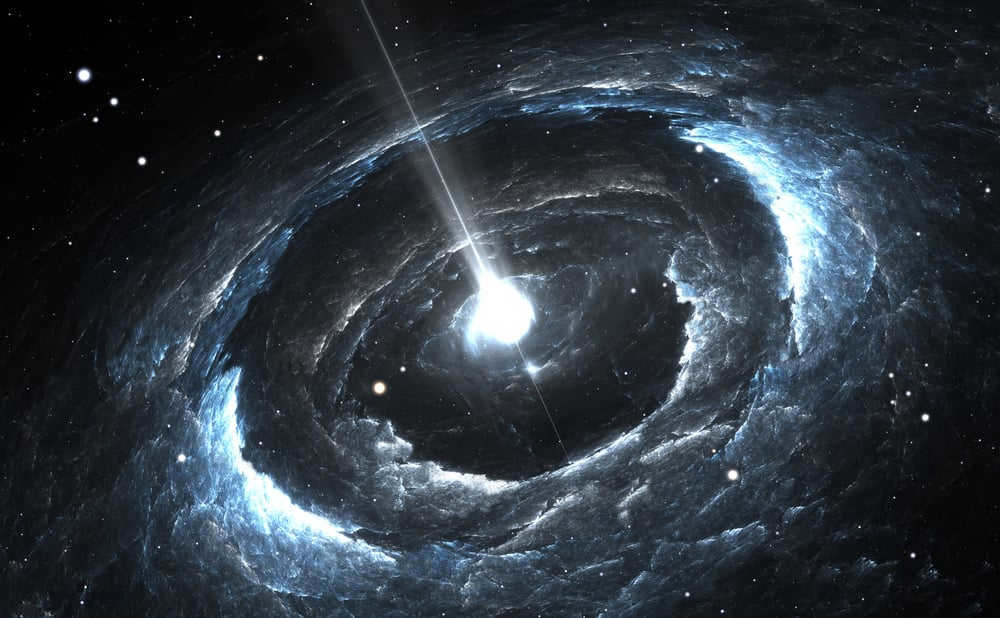
Neutron stars are incredibly unique and peculiar celestial bodies within the vastness of the universe. However, our understanding of these remnants of deceased stars remains quite limited.
Back in 1967, the renowned astrophysicist Jocelyn Bell, who was then a research student at the University of Cambridge, embarked on a study of radio signal variations using a specially designed detector created by her supervisor, Anthony Hewish. Hewish, a doctoral student at Cambridge University and a Nobel Prize-winning radio astronomer, had developed this detector.
During her research, Bell made a remarkable discovery: she observed distinctive, rapid, and consistent radio pulses emanating from a source located in the Foxy constellation. This finding led some astronomers to speculate that these signals originated from extraterrestrial beings.
Due to this, the radio source was playfully dubbed “little green men,” or LGM for short.
Over time, scientists have made increasingly advanced observations and discovered more and more types of neutron stars. Currently, we have detected over 2500 of these celestial objects.
So, what exactly are neutron stars and why are they called that?
In 1934, astronomers Walter Baade and Fritz Zwicky first theorized the existence of neutron stars. However, there are conflicting reports that Soviet physicist Lev Landau actually predicted them earlier in 1932, the same year that neutron particles were discovered.
Baade and Zwicky proposed that when a dying star undergoes a supernova explosion, its iron core collapses and forms a neutron star. This collapse can only occur if the core’s mass exceeds the Chandrasekhar limit, which is 1.4 times the mass of the Sun or approximately 2.765*10^30 kg.
When the core collapses, the energy released from this event results in the expulsion of the material surrounding the core. After the ejection of all the surrounding matter, the only remaining entity is the nucleus, which transforms into a neutron star.
As previously mentioned, scientists have identified over 2500 neutron stars. One of these, known as PSR B1919+21, was discovered by Bell and Huish. Other notable examples include the Crab Pulsar, situated within the Crab Nebula, and the Pulsar in Sails, located within the remnants of a supernova star.
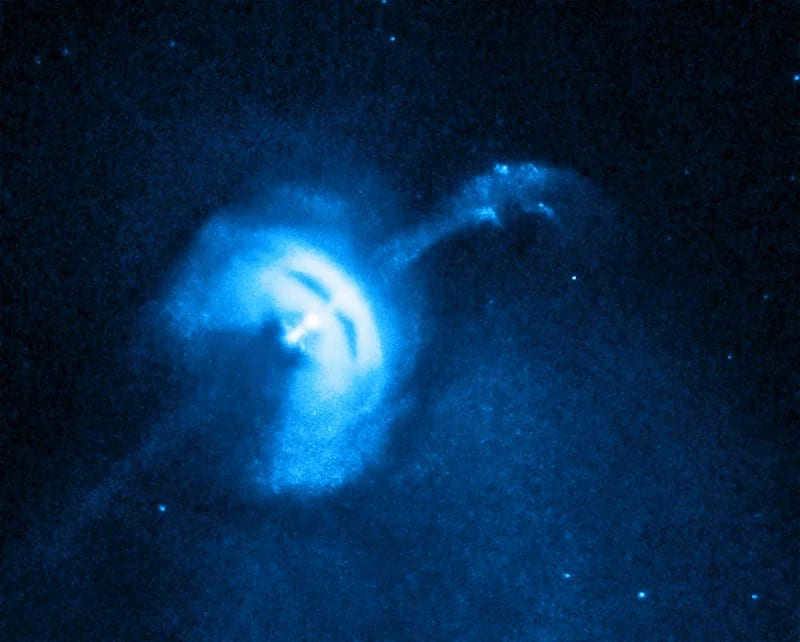
Neutron stars derive their name from their composition, which is primarily made up of neutrons. Additionally, they contain small amounts of electrons and protons, resulting in an overall neutral charge for the entire object.
Typically, neutron stars have a radius of approximately 12 kilometers. Despite their small size, they are incredibly dense, with a mass 1.4 times that of the Sun. In fact, a tablespoon of material from a neutron star can weigh as much as Mount Everest!
Neutron stars are also responsible for generating some of the most intense magnetic fields in the cosmos. These magnetic fields can be a million billion times stronger than Earth’s magnetic field. For instance, in 2004, a neutron star located approximately 50,000 light-years away experienced a powerful burst of energy. The strength of its magnetic field was so remarkable that it even had an impact on Earth’s ionosphere, despite the vast distance between the two!
Under such extreme circumstances, the matter within neutron stars is likely to possess highly unusual properties that are not typically observed. This unique state of matter is referred to as exotic quark matter. This substance can exhibit extraordinary characteristics such as superconductivity and superfluidity, where liquids flow without any resistance.
To gain a better understanding of the origins of neutron stars, it is crucial to delve deeper into their formation, especially during the final stages of a star’s life cycle.
Formation of Neutron Stars
Neutron stars are formed through the dramatic collapse of massive stars during a supernova explosion. This collapse occurs when the core of the star runs out of nuclear fuel and can no longer support its own weight against gravity. As the core collapses, its electrons are forced into the atomic nuclei, combining with protons to form neutrons. This process is known as neutronization.
During the collapse, the core of the star becomes incredibly dense, with a mass greater than that of the sun compressed into a sphere about 10 kilometers in diameter. This extreme density gives rise to the strong gravitational field and high pressure conditions found on neutron stars.
The collapse is followed by a rebound, as the core bounces back from the extreme compression. This rebound sends out a shockwave that propagates through the outer layers of the star, causing them to be expelled into space in a supernova explosion. The shockwave also heats up the remaining core, causing it to emit a burst of neutrinos, which are nearly massless particles that interact weakly with matter.
The resulting remnant of the supernova explosion is a neutron star. These stars are incredibly dense, with a teaspoon of neutron star material weighing about as much as a mountain. They also have extremely strong magnetic fields, which can give rise to powerful electromagnetic emissions, such as pulsars.
Neutron stars are fascinating objects that provide valuable insights into the physics of extreme conditions. Their formation is a result of the complex interplay between gravity, nuclear physics, and astrophysical processes. By studying neutron stars, scientists can gain a better understanding of the fundamental laws that govern our universe.
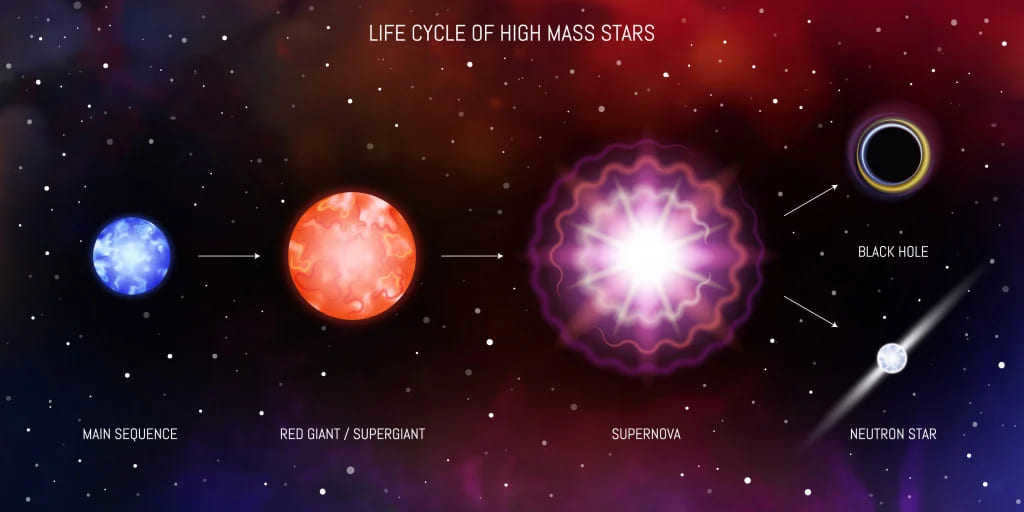
Throughout their lifespan, stars experience various stages of development.
Following their formation, stars enter a phase referred to as the main-sequence stage. This stage is characterized by the ongoing process of nuclear fusion taking place in the star’s core. The majority of the stars we observe, including our own Sun, are currently in this main sequence stage. In fact, stars spend the majority of their lives in this particular stage.
During the main sequence stage, a star achieves stability by maintaining an equilibrium between two opposing forces. The first force is the gravitational force, which tends to cause the star to collapse. The second force is the thermal pressure resulting from nuclear fusion in the star’s core, which pushes outward.
Hydrostatic equilibrium is established when the gravitational force within the star is balanced by the thermal pressure outside, ensuring the stability of the main sequence star. This equilibrium is crucial for the star’s survival.
However, as a star reaches the end of its main sequence, its core exhausts the necessary fuel for nuclear fusion. Without the production of heat energy to counteract the force of gravity, the core undergoes a collapse. Simultaneously, density and pressure intensify, causing the star to transform into a supergiant.
Eventually, the intense pressure causes the atomic cores of iron and all other elements to break down into smaller particles. A nucleus of sufficient mass (above the Chandrasekar limit) results in extreme density and pressure. As a result, a nuclear reaction occurs where protons and electrons within the nucleus combine to form neutrons. This reaction releases a tremendous amount of energy, which we observe as a supernova.
The majority of this energy is released as kinetic energy. We can see evidence of this in the expanding matter that is ejected, particularly in the form of neutrinos and antineutrinos. These particles carry the majority of the energy and are emitted in all directions in nearly equal amounts. Only a small portion of this energy is in the form of electromagnetic radiation.
As stated earlier, the formation of a neutron star requires the mass of the star’s core to surpass the Chandrasekar limit. However, in some cases, the core’s mass can be so substantial (exceeding another higher mass threshold known as the Tolman-Oppenheimer-Wolkoff limit) that it collapses under the force of gravity, resulting in a point of infinite density, or a black hole. The Tolman-Oppenheimer-Wolkoff limit is a theoretical value that acts as an upper bound for the mass of a neutron star.
Therefore, if the core mass of a star falls within the range of the Chandrasekar limit and the Tolman-Oppenheimer-Wolkoff limit, it will form a neutron star. On the other hand, if the core mass exceeds the Tolman-Oppenheimer-Wolkoff limit, it will form a black hole.
Exploring the depths of a neutron star
Deep within the heart of a neutron star lie five distinct regions – an ethereal atmosphere, a protective envelope, a solid crust, a dense inner core, and a turbulent outer core.
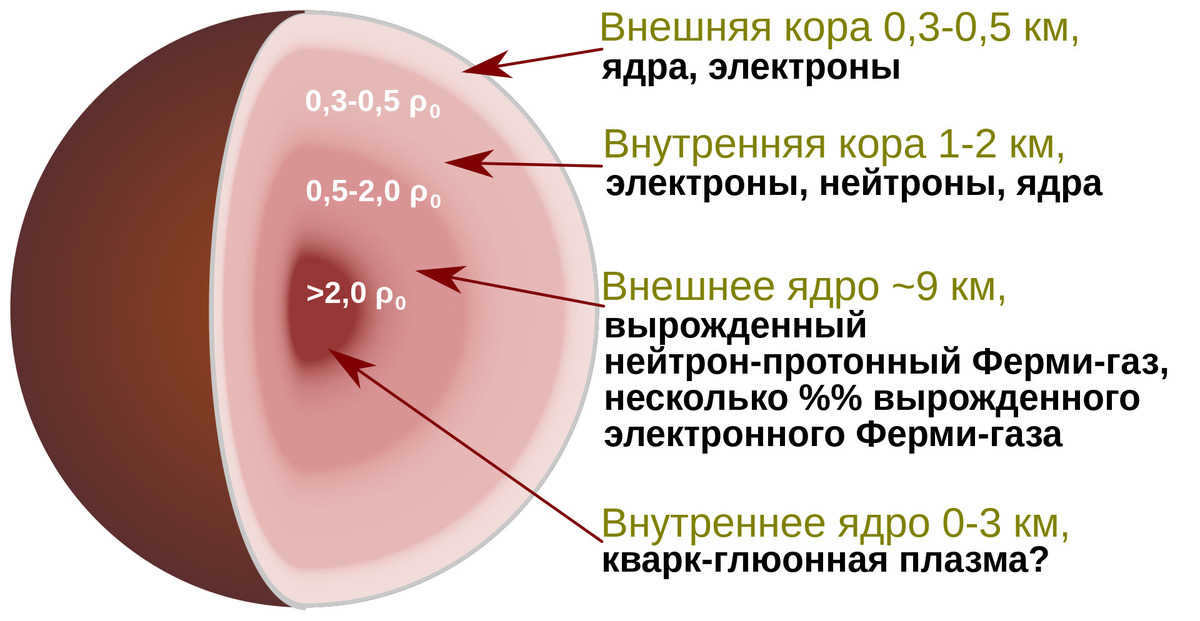
One of the most peculiar phenomena in the universe can be observed inside neutron stars, according to the theory. The density of a neutron star increases as one delves deeper into its core. This rise in density has an impact on the arrangement of atomic nuclei within the star.
At the boundary between the crust and the core, the pressure is already so immense that the nuclei are practically in contact with one another. Additionally, the increasing density leads to continuous and strange changes in the arrangement of atomic nuclei.
While the initial configuration of kernels has a three-dimensional shape (referred to as meatballs), it gradually flattens out and transforms into two-dimensional and then one-dimensional patterns. These patterns are named spaghetti, lasagna, ziti, and ravioli. Eventually, everything merges into a homogeneous soup of nucleonic matter called “sauce”.
The nucleus contains 99% of the mass of a neutron star but has a very small size. The outer nucleus consists of nucleons, which exhibit fluid-like properties (particularly, neutrons are expected to exhibit superfluidity). However, there is no information available about the behavior of the inner nucleus. The density within the inner nucleus is so high that scientists predict the existence of exotic phenomena and peculiar states of matter.
There are two classifications for neutron stars: isolated and binary. Isolated neutron stars are those that float freely in space and emit various forms of radiation like visible light, infrared, X-rays, or gamma rays.
Within the category of isolated neutron stars, there are different subclasses. One subclass is made up of compact central objects (COOs) that are found at the center of supernova remnants. Another subclass is composed of dim isolated neutron stars (DINS), which are older and emit X-rays. The most common subclass, however, is pulsars.
Pulsars are neutron stars that rotate rapidly and emit a periodic pulse or signal. This pulse can be detected as radio waves, but it can also be emitted as X-rays, visible light, or gamma rays. Most pulsars have a rotation period of about one second, but the fastest observed pulsar rotates at a rate of 650 times per second!
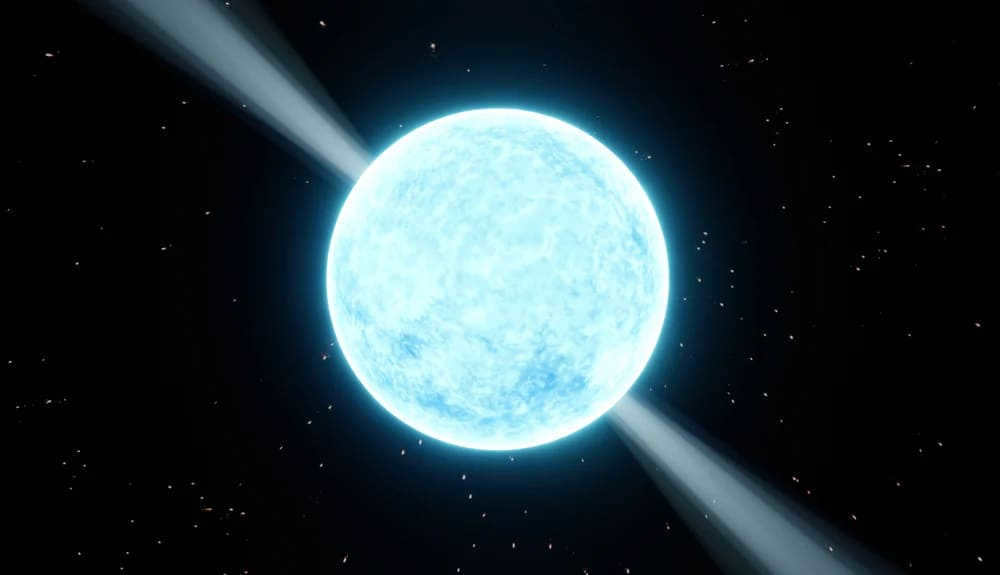
The phenomenon of the neutron star’s rapid rotation can be explained by the principle known as the conservation of angular momentum. While stars in their main sequence already possess a certain degree of spin on their axis, the collapse of a star into a neutron star causes a drastic increase in its rotational speed due to the conservation of angular momentum.
The observed pulses that we detect originate from a specific area on the surface of the neutron star. As the neutron star rotates, this radiation is emitted and spreads out into space. Each time the radiation beam aligns with the Earth, we perceive it as a pulse. This phenomenon is analogous to the operation of a lighthouse, which is why it is often referred to as the “lighthouse model.”
Pulsars, which are one of the most commonly observed types of neutron stars, were first discovered by Jocelyn Bell and Antony Hewish. Currently, there are approximately 1600 pulsars that we observe.
Binary neutron stars are systems where a neutron star is gravitationally bound to a regular star. These systems can be categorized based on the mass of the companion star. If the companion star is 2-3 times more massive than our Sun, it is classified as a high-mass X-ray binary star (HMXB). On the other hand, if the companion star is less massive than our Sun, it is classified as a low-mass X-ray binary (LMXB).
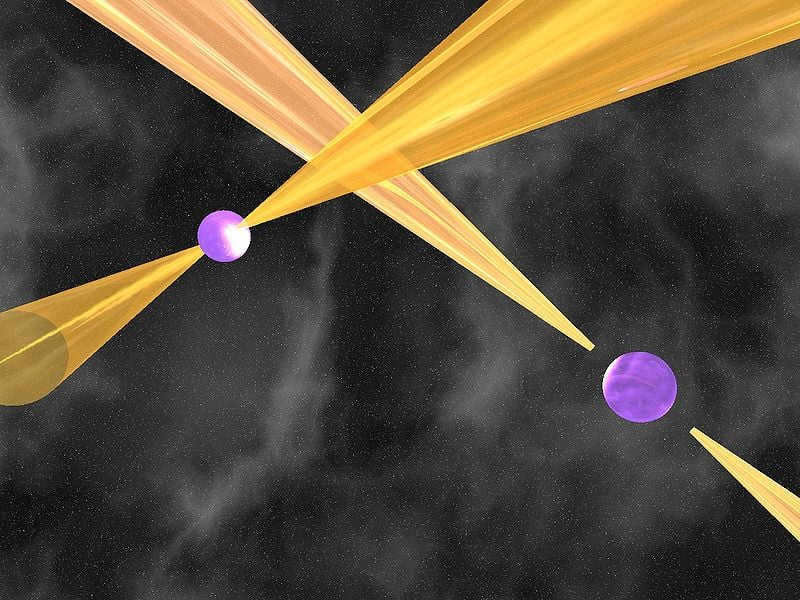
Moreover, there are indications of binary systems that exclusively consist of neutron stars. In the event that two massive binary stars undergo supernovae, they have the potential to transform into a pair of neutron stars revolving around each other. A prime example of such a system is PSR J0737-3039, which comprises two pulsars in mutual orbit.
The destiny of neutron stars
The cores of neutron stars do not undergo nuclear fusion. As a result, they gradually cool down and emit less radiation over time. Additionally, their rotation and magnetic field diminish over time.
When neutron stars are in a binary system with a nearby companion star, they can start accumulating matter from the companion star. This process can result in the companion star becoming either a white dwarf or a neutron star, but it can also lead to the destruction of the companion star.
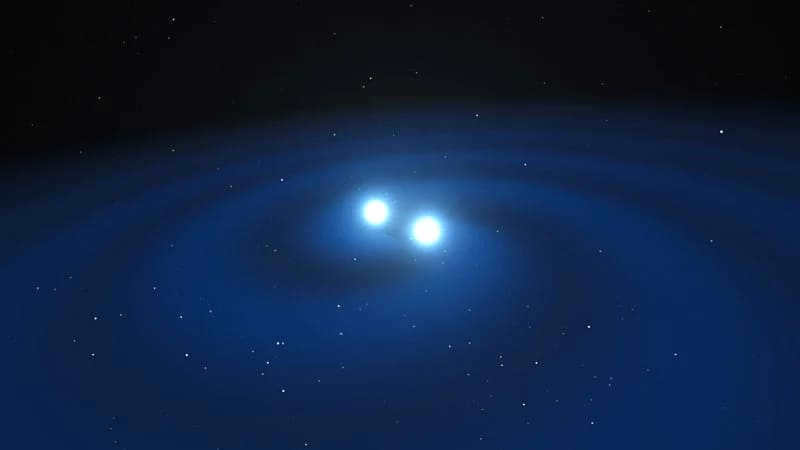
Sometimes, when binary systems consisting solely of neutron stars collide, they create what is known as a “kilonova”. A kilonova is a fleeting explosion that occurs when compact objects such as neutron stars and black holes merge. Unlike a supernova, this type of explosion is much less violent.
Typically, when neutron stars merge, a new neutron star is formed. However, if the merging neutron stars are sufficiently massive, they can collapse into black holes. Additionally, neutron star mergers generate powerful gravitational waves. The first detection of gravitational waves caused by neutron star mergers took place on August 17, 2017.
Current and future prospects for neutron stars
There is still much to discover about neutron stars. Our understanding of their characteristics comes primarily from pulsars and gravitational waves, particularly those generated by their mergers. However, we have yet to gather observational data on key aspects such as their maximum mass, size, and internal composition.
Neutron star mergers are currently a highly popular area of study in the field of astronomy. By analyzing the gravitational waves produced during these mergers, we can gain valuable insights into their various properties, including their masses, sizes, and orbital patterns. These waves can be detected even over large distances, and current efforts are underway with detectors like LIGO, Virgo, and GEO600 to capture and study them.

A mathematical framework has been developed in a recent study that offers insights into the characteristics of neutron stars in a laboratory setting. The study utilizes superfluid helium, superconducting materials, and ultra-cold gases to explore the superconducting and superfluid properties of the unique matter found within neutron stars.
Nevertheless, these investigations also highlight the challenges associated with accurately recreating the conditions of neutron star environments in a lab. However, by combining data obtained from radio and gravitational observations of neutron stars, we can enhance our comprehension of the inner workings of these extraordinary celestial bodies.
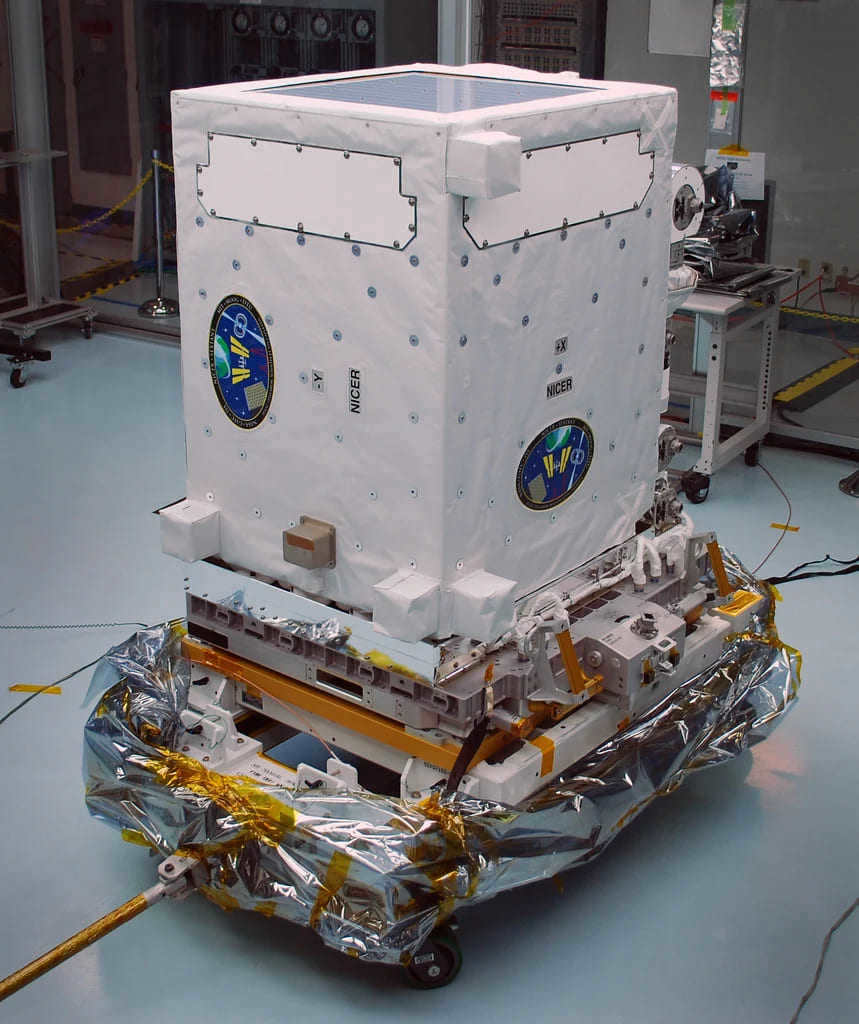
In June 2017, a new program was installed on the International Space Station called Neutron star Interior Composition ExploreR (NICER). This program has the goal of studying the unique matter found in neutron stars using X-ray spectroscopy. Additionally, it aims to showcase the spacecraft’s navigational abilities through the use of pulsars.
Furthermore, neutron stars can also be utilized to test the principles of gravity. The binary pulsar PSR J1757-1854, in particular, is expected to serve as a laboratory for two gravity experiments.
The first experiment focuses on orbital deformation, which will provide insights into the amount of deflection that should occur in elliptical orbits due to relativistic effects. The second experiment aims to detect precession, specifically Lense-Thirring precession, which has yet to be observed in binary neutron stars.
Hello there, esteemed peekaboosters and peekaboosters. I want to express my gratitude for your interest in my previous publication. I am genuinely thrilled that it received an exceptional number of positive responses. Let’s continue our gradual exploration of the cosmos. This particular post may not be lengthy, but rest assured, the next one will be significantly more substantial 🙂
Now, let’s discuss how we go about observing objects such as neutron stars.
We employ various methods to observe these celestial bodies:
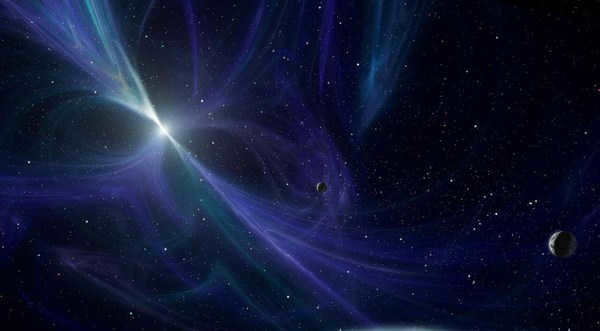
The discovery of neutron stars came about through the observation of radio pulsars, which incidentally led to the Nobel Prize being bestowed.
Following World War II, radio astronomy made significant strides in England. The construction of a radio telescope allowed for the examination of distant radio sources and their fluctuations.
During this time, Jocelyn Bell, a graduate student, and her supervisor, Anthony Hewish, played a pivotal role in the field.

Consequently, it became evident that a certain recurring source of radio emission exists, displaying a precise and consistent periodicity. This gave rise to some controversy.
The existence of neutron stars was suggested as a theoretical concept, but nobody anticipated the occurrence of radio emission.
Radio pulsars were eventually identified as neutron stars, rather than white dwarfs. While white dwarfs would pulsate with increasing frequency over time, in this case, the frequency decreased. It resembled the rotation of a neutron star.
In recognition of his immense contributions to the advancement of radio astronomy, Anthony Hewish, the leader of Bell’s team, was awarded the Nobel Prize in Physics. Thus, the person responsible for this groundbreaking discovery was among the laureates.
However, it should be noted that prior to this breakthrough, neutron stars had been identified but their true nature had not been fully understood. They were initially detected as sources of X-ray emissions, which represents an alternative approach to the process of observation.
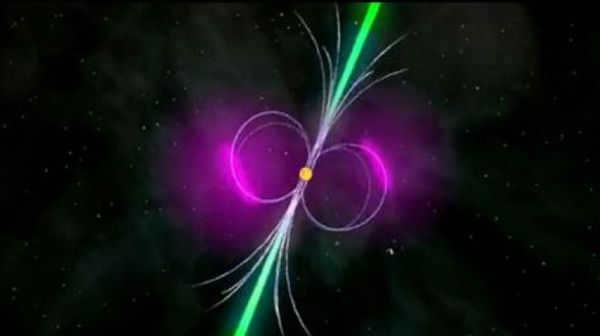
In 1962, scientists initiated the launch of X-ray detectors on rockets and successfully detected X-rays emitted from the Sun. Remarkably, they also discovered the first X-ray source outside our solar system, which is now referred to as Scorpio x-1. The name Scorpio originates from the constellation Scorpius, and the “x” represents X-rays, as they are commonly known in most countries. Additionally, the number “1” denotes that it was the initial X-ray source identified within that specific constellation.
Although Scorpio x-1 was the first known object resembling a neutron star, its lack of pulsations initially made it challenging to confirm its nature. However, X-ray pulsars had already been detected in the early 1970s.
Neutron stars are formed during supernova explosions, and they possess an extremely high initial temperature, reaching several million degrees on the surface. This remarkable phenomenon has been meticulously observed and studied.
I sympathize with the girl.
And why are they of such significance. Or do you desire to captivate subscribers 🙂 Nevertheless. Have I been reading so carelessly?
There is a fantastic book written by Popov titled “Superobjects: Stars the Size of Cities” and the ScienceLite channel on youtube (http://www.youtube.com/c/ScienceLite). It provides a simple and easy-to-understand explanation about neutron stars.

Cygnus
The Cygnus constellation is located 80 km away from Minsk. The photo was taken with a Nikon d80+ Nikkor 50mm 1.8 lens.
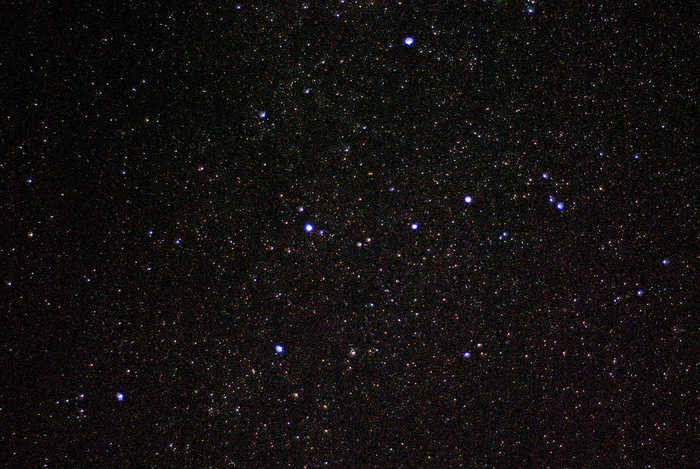
Andromeda Galaxy
I made my first attempt at photographing the Andromeda Galaxy through a telescope, but it didn’t go quite as planned. During a 30-second exposure, a dark cloud obstructed the view, so I decided to switch gears and use a tripod with a 50mm lens instead. The results were much clearer and easier to see. If anyone has experience with astrophotography through a telescope, I would greatly appreciate some advice on the correct way to do it. My telescope is a budget-friendly Celestron 70lt az.
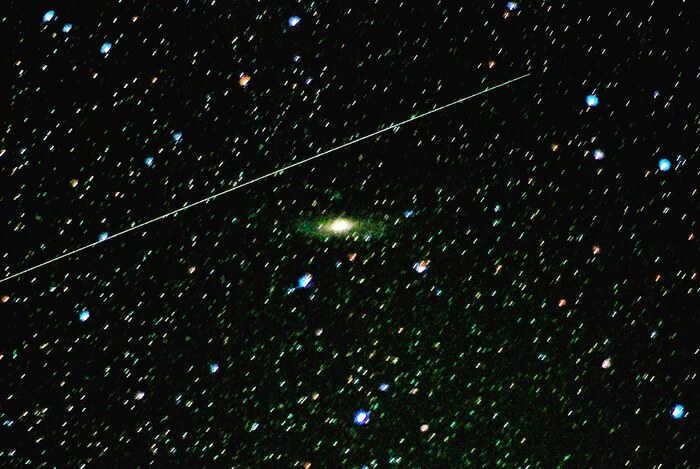
The most alluring properties in our solar system
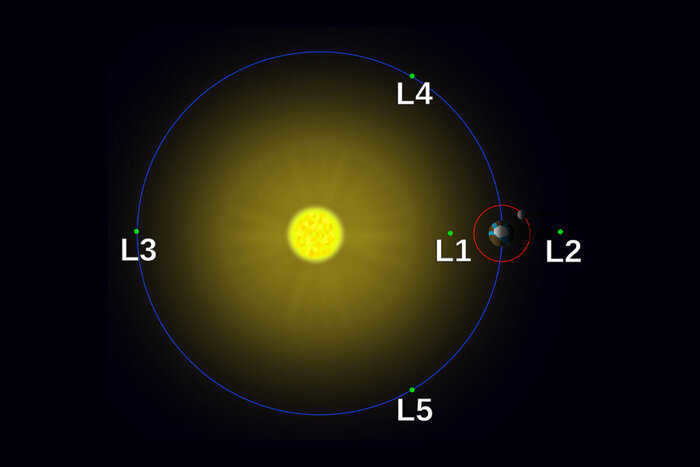
Every celestial entity exerts a gravitational pull on one another. This influence is particularly significant on objects in close proximity. In such systems, the impact of other forces is also evident, collectively determining the appearance of the orbits of these “participants of motion.” The forces in Lagrangian points are in equilibrium. Therefore, if an object with a relatively small mass is positioned there, it will remain at a consistent distance from the celestial bodies that constitute stability islands. These regions are metaphorically referred to as cosmic parking lots: once an object is situated within them, the need for expending energy to remain there practically diminishes. Overall, this is an optimal location for any man-made entity intended to endure in outer space for an extended duration.
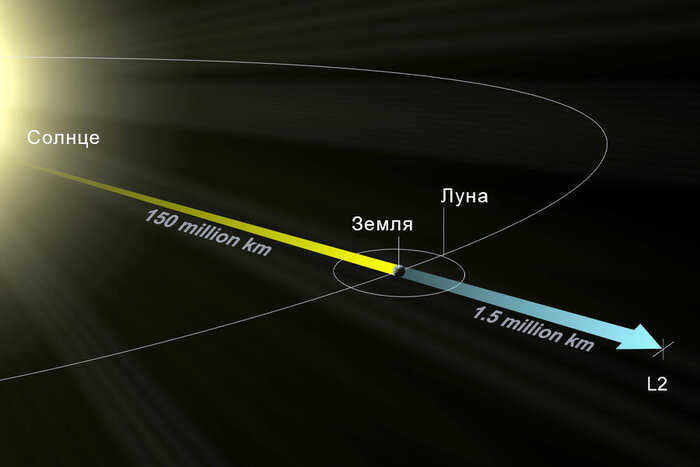
The issue of what can be placed in a specific Lagrange point is rather intriguing in this context. Let’s focus on the ones formed by the gravitational interaction between the Sun and the Earth. L1 is positioned approximately 1.5 million kilometers from our planet, between these two celestial bodies. Thanks to the unobstructed view of the star, it serves as an optimal location for observing the Sun.
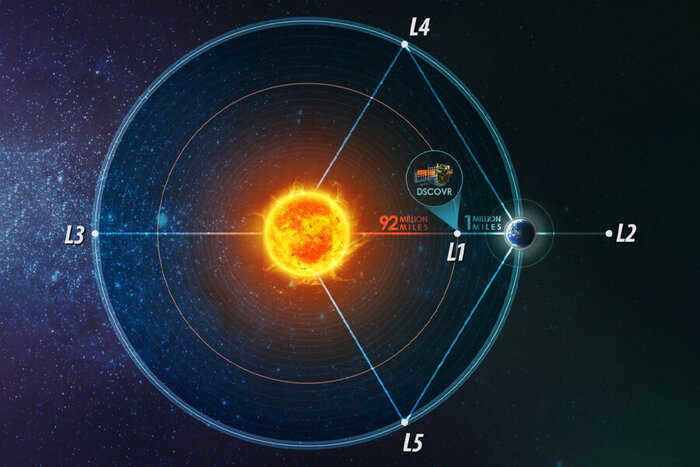
The Deep Space Climate Observatory is a spacecraft from the United States that is used to observe the Sun and Earth. It is positioned at Lagrangian point 1.
L2 is located on the opposite side of the Earth and at an equal distance. This location provides reliable protection from sunlight and offers unique opportunities for observing the cosmos from a different perspective. In 2022, the James Webb telescope, which astronomers have eagerly awaited for two decades, began its operations from this point.
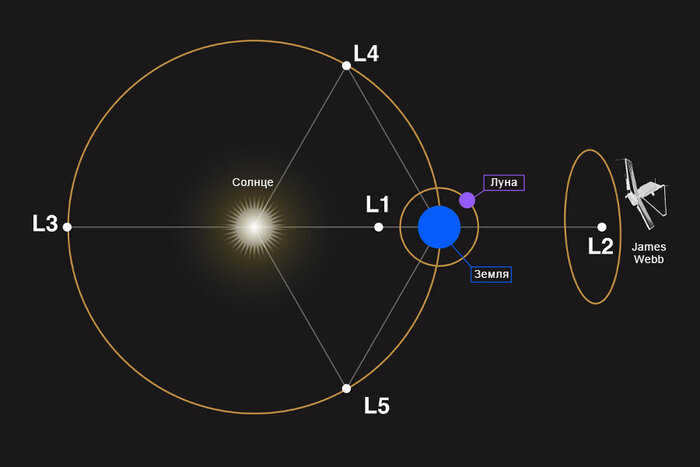
L3, located in the farthest reaches of the galaxy, lies on the opposite side of Earth’s orbit from the Sun. It is an enigmatic and elusive point that remains hidden from the planet’s surface, making it a subject of fascination for science fiction writers. However, scientists have little interest in exploring this inaccessible spot.
The L4 and L5 points exhibit some variation compared to the previous ones. The key aspect is that within each group of Lagrangian points, the initial three points possess a slight instability, causing the objects within them to gradually shift laterally. Although it is possible to maintain their position here if desired, it still demands additional effort. In certain pairs of celestial bodies, the stability of L4 and L5 might not be particularly high, especially if their masses differ by less than a factor of 25. However, within the Sun-Earth system, where the star is significantly heavier than the planet, these points demonstrate remarkable stability. Furthermore, they seem to exert an attractive force on various objects – particularly notable in the Sun-Jupiter system, where thousands of asteroids have amassed at L4 and L5.
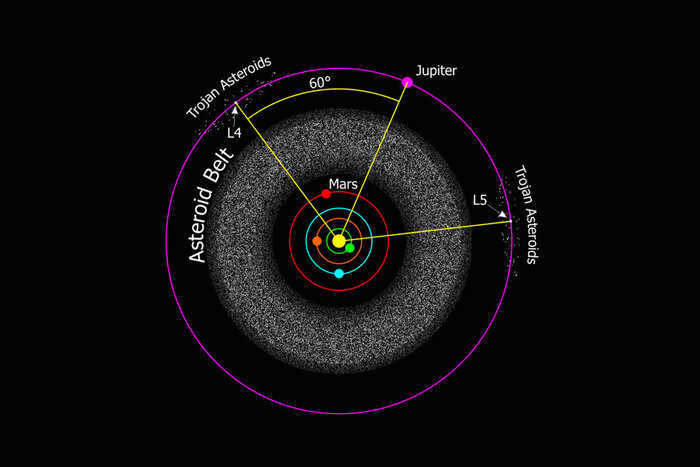
Each Lagrangian point in the solar system possesses its own unique characteristics. Some of them are conducive to gathering construction materials, if one considers drifting asteroids as such. Others could serve as locations for refueling stations to replenish fuel for spacecraft traveling through the vastness of space. It is even possible that human colonies could be “suspended” at these points. Of course, this is a matter of the distant future, which we may not live to witness, given the current state of affairs on Earth. However, it is always good to dream, isn’t it?
Thank you for your attention! If you enjoyed the article, you can show your support with a “like” or subscribe to this channel. We would also like to mention that we have our own Telegram channel where we regularly share interesting posts about space and astronomy.

